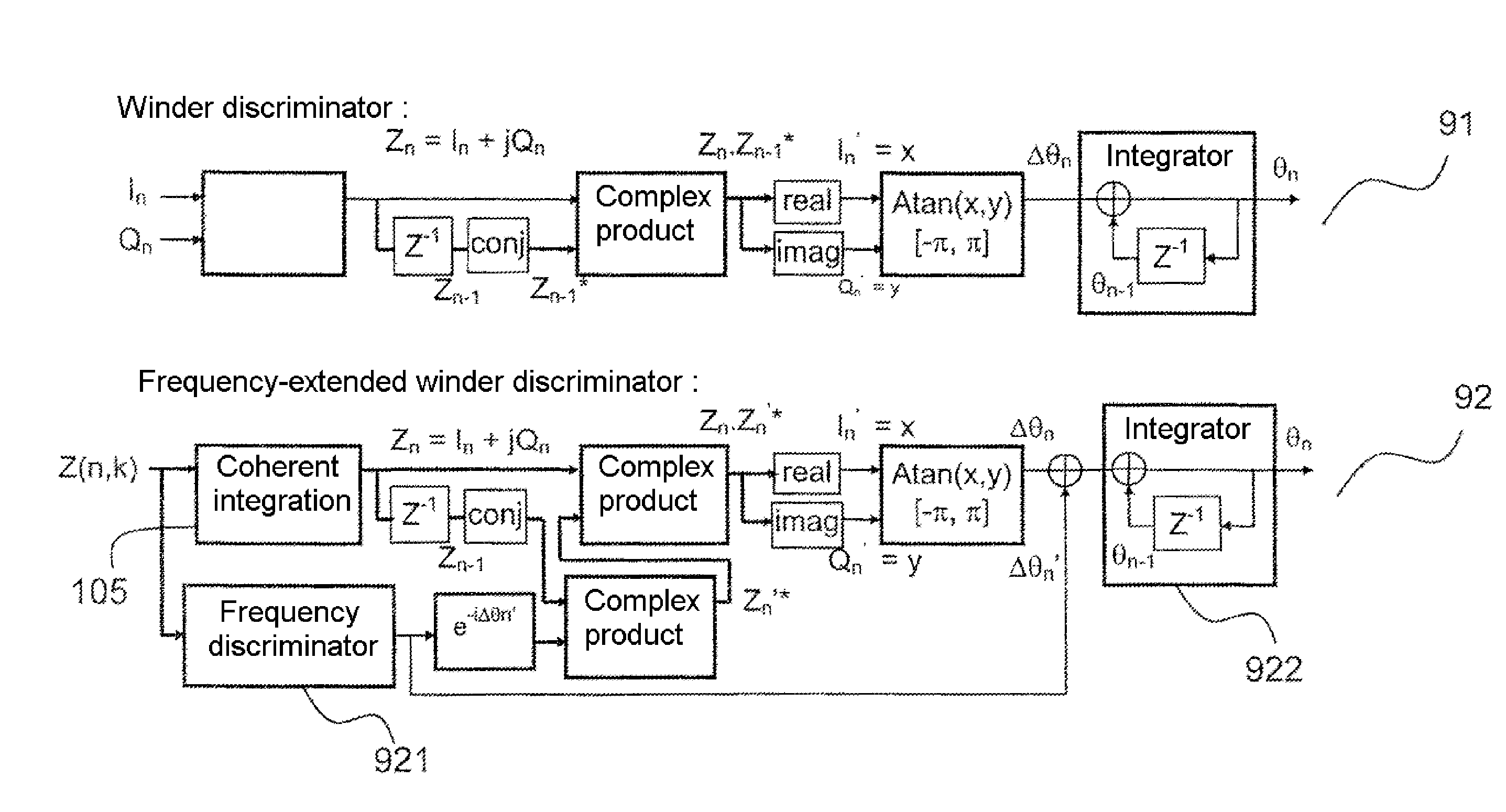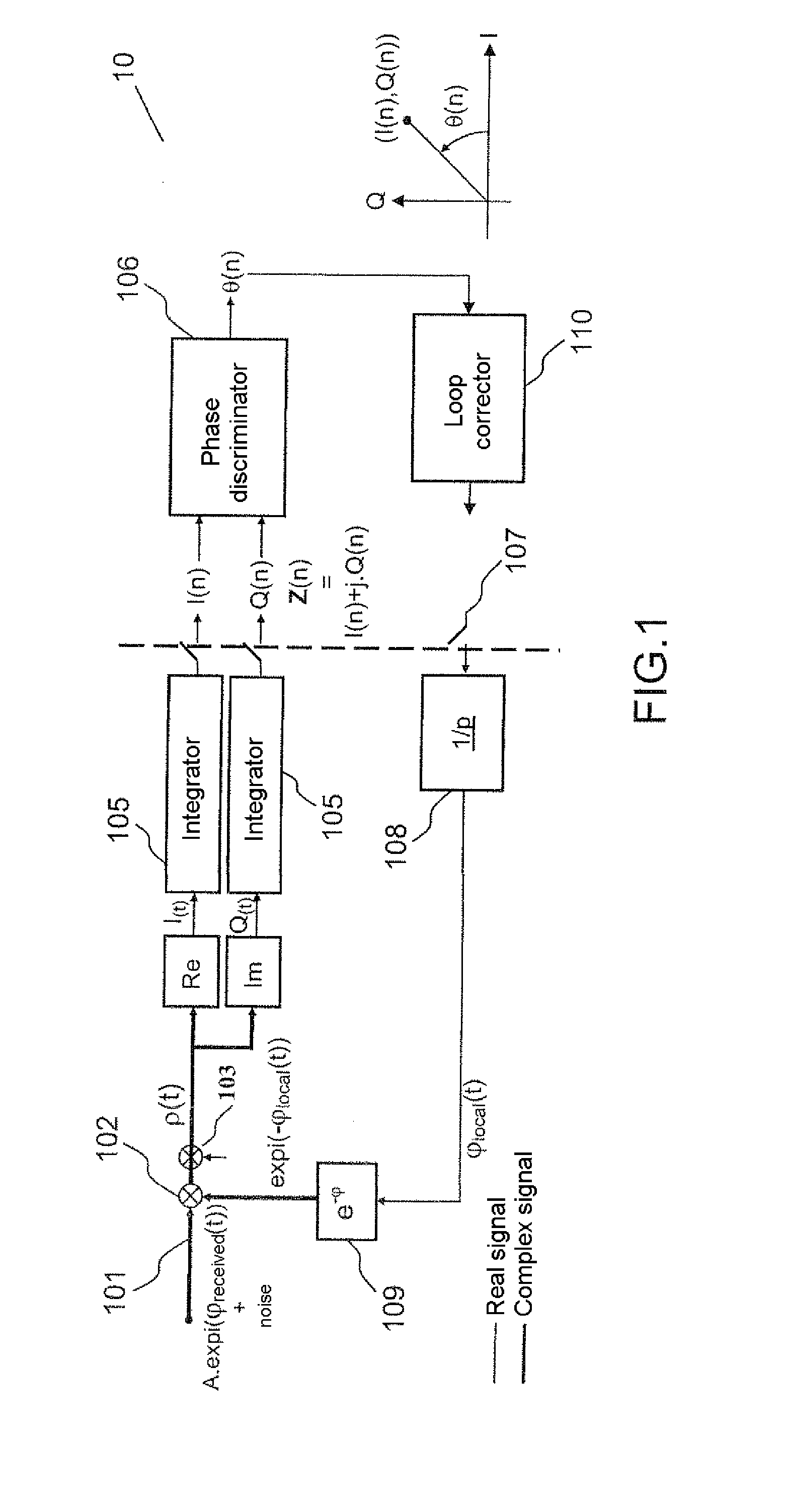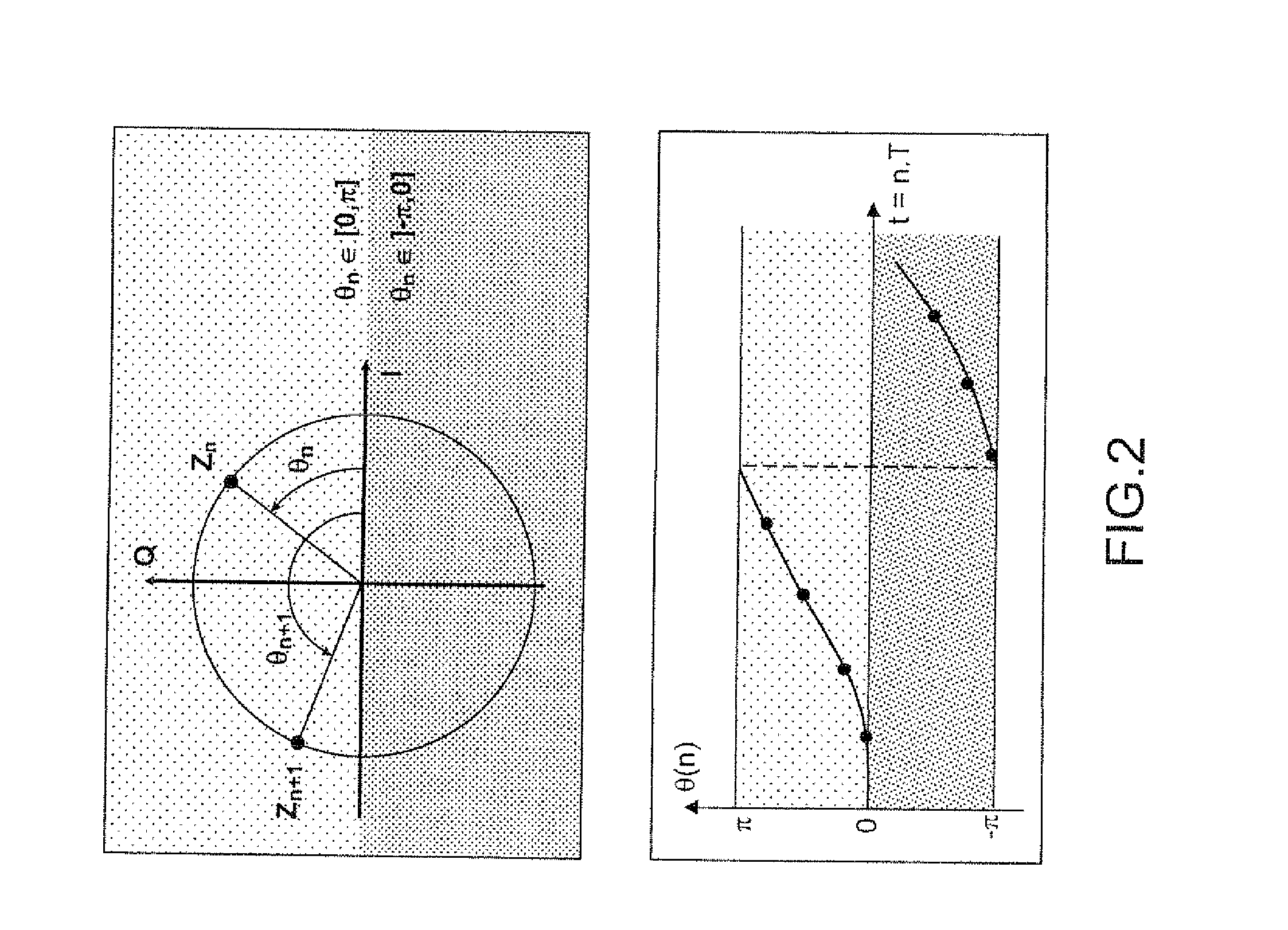Device for discriminating the phase and the phase variation of a signal
a technology of phase variation and signal, applied in oscillation comparator circuits, automatic control of pulses, instruments, etc., can solve the problems of divergence of loops and dropouts, significant doppler frequency variation in signals received by receivers, and overhead in terms of computational load for receivers
- Summary
- Abstract
- Description
- Claims
- Application Information
AI Technical Summary
Benefits of technology
Problems solved by technology
Method used
Image
Examples
Embodiment Construction
[0038]FIG. 1 shows diagrammatically the principle of the demodulation of the signal received by a satellite radionavigation receiver 10. The processing actions situated to the left of the dashed line constitute a continuous or discrete system with a high sampling frequency Fc, for example equal to 100 MHz. They are carried out preferably by integrated circuits of ASIC or FPGA type which are compatible with a high frequency such as this. The processing actions situated to the right of the dashed line constitute a system sampled at a low frequency, for example equal to 50 Hz, and are carried out by software, for example DSP signal processing software.
[0039]The received signal 101 is demodulated by a local carrier 109 of phase φlocal(t) by way of a complex multiplier 102. The term “local carrier” designates a signal generated locally at a second frequency different from that of the received signal, this second frequency being controlled by virtue of a digitally-controlled oscillator 10...
PUM
 Login to View More
Login to View More Abstract
Description
Claims
Application Information
 Login to View More
Login to View More - R&D
- Intellectual Property
- Life Sciences
- Materials
- Tech Scout
- Unparalleled Data Quality
- Higher Quality Content
- 60% Fewer Hallucinations
Browse by: Latest US Patents, China's latest patents, Technical Efficacy Thesaurus, Application Domain, Technology Topic, Popular Technical Reports.
© 2025 PatSnap. All rights reserved.Legal|Privacy policy|Modern Slavery Act Transparency Statement|Sitemap|About US| Contact US: help@patsnap.com



